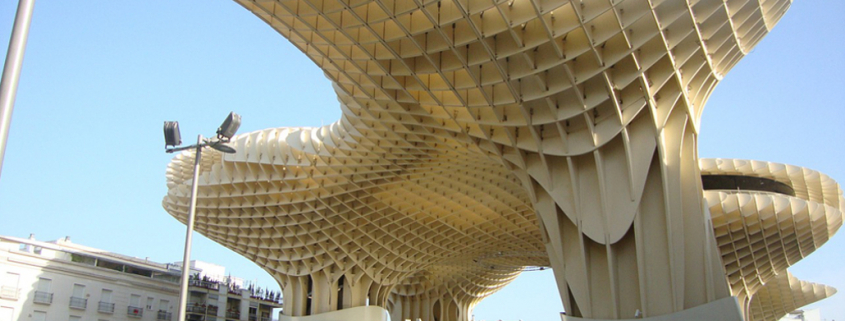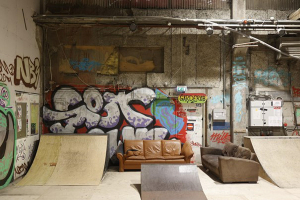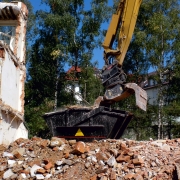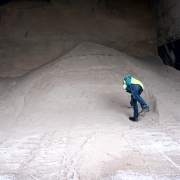Climate Friendly Future Depends on a Successful Circular Transition
Currently, the production, consumption and disposal of products and food are responsible for almost half of global greenhouse gas emissions and up to 90 percent of biodiversity loss, according to the latest Circular Cities Declaration report. This take-make-waste approach is exacerbating the consequences of climate change and, as the demand for strategic resources such as steel, cement, plastics and food is projected to rise by 42 percent by 2050, the transition to a circular economy is only becoming more urgent.
Cities and local governments have a key role to play in this transition. In Europe, the European Commission is increasingly recognizing local authorities’ leadership in this area by initiating and funding various projects that help cities take measures to close and shorten material loops across the entire value chain and life cycle of materials. These efforts, including CityLoops, CircularInvest and Definite-CCRI, have helped cities like Høje-Taastrup and Roskilde (Denmark) and Seville (Spain) take concrete actions in line with the Commission’s Circular Economy Action Plan. It is important to ensure, however, that these are not isolated actions. A successful circular transition, where resource consumption is meaningfully decoupled from economic growth, requires circular practices to be embedded in organisational and policy strategies.
Two great examples of integrating circular practices into plans for the future come from Denmark where, within the context of the CityLoops project, Høje-Taastrup incorporated circular goals into its Climate Action Plan, securing a political mandate to support pilot projects exploring circular construction. One of the pilot projects sought to repurpose the municipality’s City Hall: in 2016, the City decided to establish housing for new residents and to create a nice space for municipal employees to work together. Originally, Høje-Taastrup planned to demolish the old City Hall and build a new one in a different location. In the end, a new City Hall was built, while the old City Hall was being converted into housing, saving an estimated 20,000 tons of natural resources and 2,000 tons of CO2 emissions. The municipality added the lessons learned from this project to its Sustainability Strategy and, as a result, will give preference to repurposing and renovation over demolition for future projects. For Høje-Taastrup this is just one of the many positive ripple effects of its work in CityLoops. Turan Akbulut, City Council Member and Chairman for the Planning and Environment Committee notes:
“The mindset is changing, and we are becoming more aware of the importance of planning for effective use of our resources. On an organizational level, an example of these changes is the establishment of a municipal sustainability group. Furthermore, the development of the sustainability strategy has had the effect both of inspiring others throughout the organization and making sustainability more visible, while also setting certain structures in place to ensure that sustainable practices are prioritised.”
Meanwhile, Høje-Taastrup’s neighbour Roskilde secured a political mandate to engage in circular construction projects with a focus on the reuse and recycling of construction materials, design for recycling, and reuse of excavated soil. Such a mandate facilitates alignment between overlapping or competing plans and ensures the smooth implementation of actions, tasks and activities. To secure its mandate, the municipality established conditions for experimentation in the urban development area of Musicon. According to Klaus Kellerman, Senior Consultant, Circular Construction, Roskilde, taking a more holistic view made it much easier to create political goodwill for this work:
“Normally it can be a struggle to secure a mandate for circularity from project to project, but we embedded levers in the vision for the area, local plan(s), stakeholder agreements and established a secretariat to secure sustained commitment.”
For Roskilde, this project has also provided a great opportunity to develop collaborative projects with construction companies, allowing for efficient and cooperative risk management between the different stakeholders. As Kellerman recalls:
“Through our participation in CityLoops, we have substantially developed our risk management. We now operate a risk mapping with three key elements: the isolation of risk, early dialogue, and the building phase: dialogue and transparency. This means that instead of operating in a “black box”, we now operate with a clear idea of the risks involved and how to overcome them.”
Roskilde’s approach enabled more ambition in its work in the Musicon area. The municipality hopes to continue developing a new urban district, centred around music, that will encompass a blend of residential and commercial spaces, including shops, cultural and leisure activities. In Muiscon, existing buildings are already being refurbished or demolished with leftover construction materials and soil going toward new construction. For instance, dug-up concrete was crushed and used to replace 100 percent of the coarse aggregate in new concrete for the foundation of a building car park. This is estimated to have saved approximately 50,00 Euro, compared to the use of new concrete.
Further south, Seville also focused on embedding circular practices with an emphasis on citizen engagement. By promoting and raising awareness of circular activities among citizens, municipalities are more likely to gain a political mandate for long term circular policies that can meaningfully advance the circular transition. To that end, Seville developed a City Simulation Platform, which includes instruments for the data-driven planning, collection and treatment of various waste fractions, evaluation of citizen satisfaction and policy effectiveness, and the simulation of future scenarios.
Seville’s platform contains a construction and demolition waste flow optimization tool, which supports managers in deciding on future clean point sites, while giving citizens access to maps with the locations of the closest clean point. The platform also contains a well-being monitoring tool that determines the relationship between well-being and project actions. This tool can be used by both policy-makers (who receive access to a simulation framework that quantifies the influence of circular actions on well-being) and citizens (who get access to data about specific well-being circularity indicators, relevant actions and impact estimations on the city’s well-being). By combining these tools in a single platform, Seville is able to support cross-sectoral dialogue and facilitate data exchange between municipal departments, research institutions and relevant business partners.
Alongside Seville, Roskilde and Høje-Taastrup, Apeldoorn (The Netherlands), Bodø (Norway), Mikkeli (Finland) and Porto (Portugal) also participated in the CityLoops project where they contributed to the development of handbooks on bio-waste and construction and demolition that provide concrete advice for other municipalities. The handbooks feature practical examples outlining how cities implemented the tools they developed, why certain decisions were made, what could have been done differently and how this work fits into the broader context of European circular strategies and policies.
To reduce greenhouse gas emissions, protect biodiversity, and support a climate-friendly future, circular practices must be integrated into activities across Europe, and beyond. Inspiring examples of this work already highlight the progress European cities are making in implementing circular principles, and by sharing these experiences we can only hope others will follow in their footsteps.
Author: Jon Jonoski, Expert, ICLEI Europe
(Published in GLOBAL RECYCLING Magazine 1/2024, Page 35, Photo: martine87 / pixabay.com)








